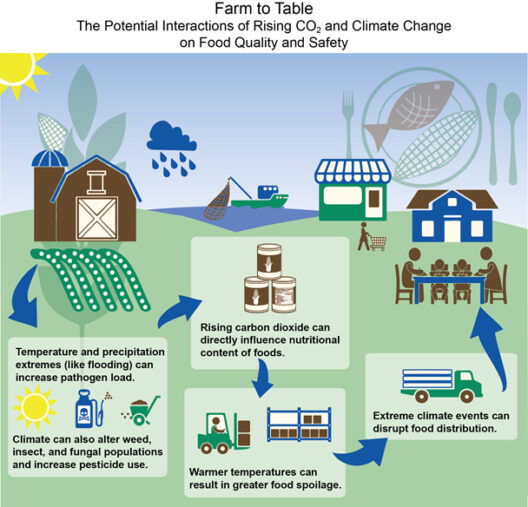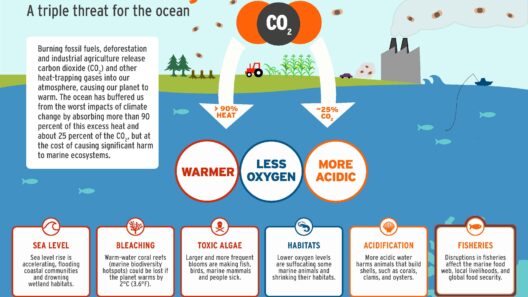In recent years, the conversation surrounding food production and consumption has intensified, particularly in the context of climate change. As global temperatures rise and environmental degradation accelerates, the question arises: can buying local food really help the Earth? This inquiry leads us to a multifaceted exploration of local food’s environmental implications, its potential benefits in combating global warming, and the shifts in consumer behavior needed to navigate these challenges.
At the heart of this discussion lies the concept of food miles—the distance food travels from its point of origin to its ultimate destination, typically a consumer’s plate. The transportation of food across vast distances contributes significantly to greenhouse gas emissions, primarily from fossil fuels consumed by trucks, ships, and planes. These emissions are a major driver of global warming. By purchasing local food, consumers can effectively reduce the carbon footprint associated with transportation. This reduction is often cited as one of the most compelling arguments for supporting local agriculture.
Furthermore, the benefits of local food extend beyond mere transportation. Local farms often employ more sustainable practices compared to large-scale industrial agriculture. Smaller farms are less likely to engage in practices that deplete soil health, such as monocropping and excessive pesticide use. Instead, many local farmers utilize organic or regenerative farming techniques, which enhance biodiversity and soil vitality. This approach not only sequesters carbon but also fortifies ecosystems, making them more resilient to climate change.
In addition to agricultural practices, buying local often means supporting seasonal produce, which aligns closely with natural ecological cycles. Seasonal eating encourages consumers to select foods that are naturally abundant, reducing the energy-intensive processes associated with greenhouse gas emissions. When food is harvested during its natural growing season, it typically requires less energy to produce and transport. This synergy with nature fosters a healthier environment and a more intuitive relationship with food.
However, the impact of local food on reducing global warming is not solely attributed to agriculture and transportation. The role of consumer habits is equally pivotal. By choosing to support local farmers, consumers are indirectly promoting a food system that prioritizes sustainability. This conscious consumerism shifts demand away from industrial food systems that often prioritize profit over environmental health. When more individuals commit to purchasing locally, the ripple effects can transform local economies, enhancing resilience against the vicissitudes of global supply chains exacerbated by climate change and pandemics alike.
One cannot overlook the social implications of local food systems. Communities that prioritize local agriculture often foster connections between farmers and consumers that transcend mere transactions. This cultural shift encourages transparency in food sourcing, strengthening community bonds and instilling a sense of responsibility for local ecosystems. As consumers become informed about where their food originates, they articulate higher demands for ethical practices and sustainability, which compels local farmers to adopt environmentally friendly approaches. This collective action can amplify the reduction of greenhouse gas emissions across the community.
However, it is essential to approach the concept of local food with nuance. Buying local is not a panacea for global warming. While it undoubtedly offers significant advantages, not all local foods are created equal. For instance, certain local products may still be energy-intensive to grow or process, particularly if they require heated greenhouses or significant irrigation. Furthermore, reliance on local food alone can lead to challenges in food security and access, particularly in areas where local agriculture may be limited by seasonality or climatic conditions. A balanced approach that incorporates both local and sustainable international sourcing may sometimes serve as a more effective strategy to mitigate climate change.
Additionally, local food systems can suffer from scalability issues. For instance, the demand for ethical and transparent sourcing may exceed local supply capabilities, necessitating discussions about how to sustainably expand these systems. When bouts of extreme weather occur—such as droughts or flooding—local farmers may struggle to keep produce available, placing further strain on local markets. Thus, promoting a culture of resilience in both local and global food systems is paramount to addressing these complexities.
In the face of these challenges, education emerges as a critical component. Raising awareness about the environmental benefits of local food not only encourages consumers to make informed choices but also empowers them to advocate for policies that promote local agriculture and sustainable practices. Educational initiatives can help demystify food production and foster a deeper appreciation for the interconnectedness of local economies and environmental health.
In conclusion, the nexus between buying local food and mitigating global warming is profound. While there are caveats and complexities involved, the potential for local food to catalyze meaningful change in environmental practices is significant. By reducing food miles, enhancing sustainable farming practices, and fostering community ties, local food systems can play a pivotal role in the broader effort to combat climate change. Ultimately, choosing to invest in local agriculture is not just an act of consumption; it is a statement of values, a commitment to stewardship of the planet and a hopeful vision for a sustainable future.







